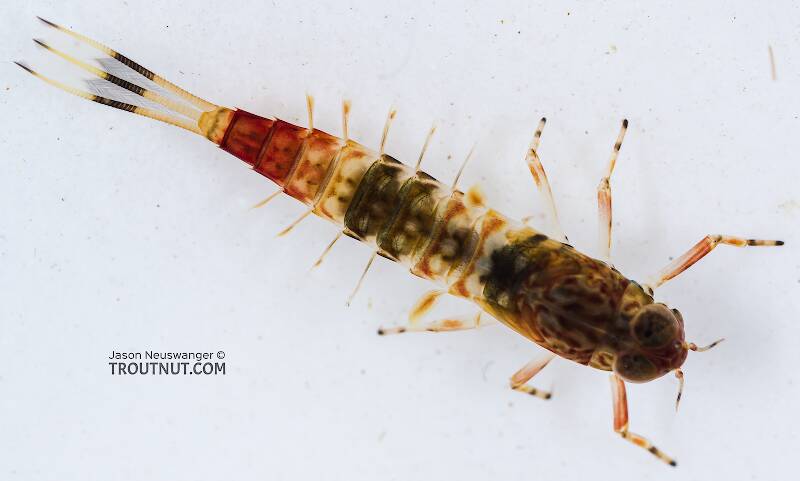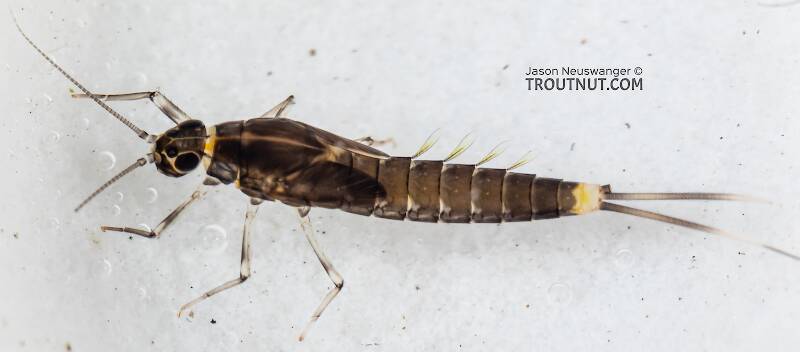
Blue-winged Olives
Baetis
Tiny Baetis mayflies are perhaps the most commonly encountered and imitated by anglers on all American trout streams due to their great abundance, widespread distribution, and trout-friendly emergence habits.
Featured on the forum

This specimen resembled several others of around the same size and perhaps the same species, which were pretty common in my February sample from the upper Yakima. Unfortunately, I misplaced the specimen before I could get it under a microscope for a definitive ID.

Troutnut is a project started in 2003 by salmonid ecologist Jason "Troutnut" Neuswanger to help anglers and
fly tyers unabashedly embrace the entomological side of the sport. Learn more about Troutnut or
support the project for an enhanced experience here.
Dark Brown Duns
Like most common names,"Dark Brown Dun" can refer to more than one taxon. They're previewed below, along with 2 specimens. For more detail click through to the scientific names.
Mayfly Species Ameletus cooki
These are sometimes called Dark Brown Duns.

I caught this Ameletus nymph with several others of the same kind. This was the most vivid example, but they all had quite a bit of striking and unusual red shading, especially on the last few abdominal segments.
I keyed it out under the microscope using Larvae and adults of Ameletus mayflies (Ephemeroptera: Ameletidae) from Alberta with slightly larger (10 mm), mature specimen with darkened wingpads. Microscope pictures are from that specimen. The characteristics in the key and most of the verification table point pretty clearly to Ameletus cooki, except that the coloration of the antennae more closely resembles Ameletus sparsatus. However, on other characteristics in which these species differ (spines on the dorsal surface of the front femora, which seem very short in this specimen; length of posterolateral spines on segments 8–9; length of spines on posterior edge of tergites 6–9), this is a better match for cooki, and that's probably the correct ID.
I keyed it out under the microscope using Larvae and adults of Ameletus mayflies (Ephemeroptera: Ameletidae) from Alberta with slightly larger (10 mm), mature specimen with darkened wingpads. Microscope pictures are from that specimen. The characteristics in the key and most of the verification table point pretty clearly to Ameletus cooki, except that the coloration of the antennae more closely resembles Ameletus sparsatus. However, on other characteristics in which these species differ (spines on the dorsal surface of the front femora, which seem very short in this specimen; length of posterolateral spines on segments 8–9; length of spines on posterior edge of tergites 6–9), this is a better match for cooki, and that's probably the correct ID.
Mayfly Species Diphetor hageni
These are very rarely called Dark Brown Duns.
This is one of the most important species of the Baetidae family. It is distributed across the country but most of its fame comes from excellent hatches in the West. Prior to many other former species being combined with Baetis tricaudatus, most angling literature considered it the most populous and widespread western species of the Baetidae family.


